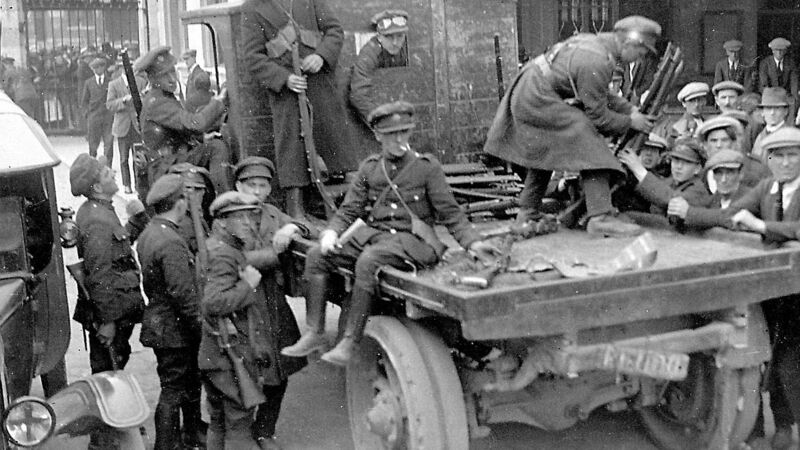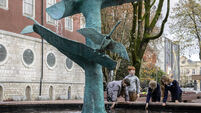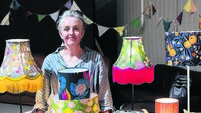Griffith, Collins, and Anna Mary - all died 100 years this month

Men who had fought side by side since 1916 against a common foe were now bitter enemies. It happened in so many countries - still does today unfortunately - where a fight for national freedom descends into civil disorder and then outright Civil War.
Described a decade later as ‘an empty formula of words’, the Oath of Allegiance was like the spark that lit the flame of savage hostility. At a national level, the days from August 12-22 changed Ireland forever.
The death in a Dublin Hospital of Arthur Griffith on August 12 and the brutal killing of Michael Collins ten days later were given headlines on newspaper all across the world.
Just eight months earlier, Griffith and Collins had seen the birth of the Irish Free State when the Anglo Irish Treaty was signed in London. Ratified by the Cabinet and Dáil and endorsed by the Irish public in the General Election, Griffith and Collins were driven men, driven by the vision of Irish independence - as Collins put it, ‘the treaty was the stepping stone to ultimate freedom’.
Arthur and Michael had soldiered together for years, two very different characters, but no-one will ever deny that they always and ever put Ireland before any personal ambition or gain.
As death and killing dominated the news in Ireland this very week a century ago, the Civil War was still being fought on the ground in Cork city and county.
During the summer of 1922, the Free State Troops - the National Army - were getting the upper hand against the Republican forces - commonly known as ‘the Irregulars’. Wars are awful, never, ever pretty and the casualties in such conflicts are often not involved one way or another. Innocent bystanders and people going about their daily chores are often caught up in such situations.
Batt Curtin was born in Rathcormac, son of James who farmed at Curraghprevin, on the road to Watergrasshill. The Curtin family later moved to Greenhall House, just outside Rathcormac village, where a Corbett family had lived.
Batt married Ellen Ahern, from Klbree near Midleton, in St Patrick’s Church, Cork, in February, 1894. Seven daughters and a son were born to the couple, James was the youngest and naturally doted on by his parents and sisters.
The Curtin family were well established in the Rathcormac area. As well as the Greenhall branch, other related members of the clan lived at Ballyglissane and in the Main Street of Rathcormac village.
Just 12 weeks later, the Curtin family were plunged into grief once more as the Civil War became a nightmarish reality in Rathcormac.
The day Griffith died, Mitchelstown Castle, occupied by Irregular troops since June, was burnt to the ground. The Army Barracks in Fermoy was similarly destroyed. As Free State troops advanced from Cork city, various shooting incidents took place.
On August 14, Free State soldiers, including Captain Denis Hickey from Glenville, were travelling towards Fermoy. At Dr Barry’s Bridge, just outside Rathcormac, they came under fire from retreating Republicans on the slightly higher ground nearer to Ring’s Cross Public House. The Free State troops took up positions in and around the bridge close to the house of Dr Barry and returned fire.
Under heavy fire, the Republicans took shelter at the back of Greenhall House - the Curtin family were within, as was Dungarvan-born Dr Paddy Kiely, then based at the South Infirmary Hospital in Cork. At the time Dr Kiely was, to use the phrase of that era, ‘doing a line’ with 25-year- old Anna Mary (Hannah) Curtin.
Bullets whizzed to and fro between the opposing factions. Unfortunately, one bullet came through a window of the house. It grazed Dr Kiely on the shoulder but hit Miss Curtin in the head, inflicting awful wounds.
Dr Barry and two Free State Army doctors, as well as Dr Kiely, attended the wounded girl but she later succumbed to her wounds. It must have been a horrendous time for the Curtin family and their neighbours and friends.
The Cork Examiner carried a report of the sad funeral: “On Sunday last, amidst manifestations of deepest sympathy and regret, the earthly remains of Miss Anna Mary Curtin, beloved daughter of Bartholomew and Mrs Curtin, Greenhall, Rathcormac, were laid to rest in the family burial ground at Gortroe.
“The funeral cortege from the Rathcormac Catholic church, despite all the difficulties of travelling, was of imposing dimensions, a truly striking tribute to the esteem and respect entertained for the deceased young lady and her family, not alone in Rathcormac and district, but over a wide area in the County Cork.”
The Kiely name was and still is synonymous with surgery and generations of Kielys have followed the medical and surgical path, not alone in Ireland but abroad as well.
Batt Curtin, who buried two of his family in that fateful year of 1922, lived on at Greenhall until 1932. Seven years later his wife Ellie died -both are buried in Gortroe.
The year before his death, Batt Curtin saw his daughter Mary Elizabeth marry James O Keeffe of Cronovan, Bartlemy - a ‘cliamhain isteach’ as they used to say. The Greenhall farm remained in the ownership of the Curtin/O Keeffe family until recently when it was sold.
The branch of the Curtin family in the Main street in Rathcormac had three in Pierce, Tom and Mary. Pierce was killed in a bicycle accident back in 1946 - he was engaged to be married at the time. His brother Tom died in 1970, and Mary in 1992.
After a burial in Gortroe, a widow was concerned that her late husband might have ‘encroached’ on the Curtins’ ‘ground’. When told of the possible problem, Mary Curtin replied: “There’s room enough for everyone.”
When Mary passed away 30 years ago, she was laid to rest where her cousins were buried in 1922.
In total, there are 13 Curtin headstones in Gortroe cemetery. Irish Civil War victim Anna Mary Curtin will be remembered at Mass in Rathcormac Church at 11am on Sunday.







 App?
App?







